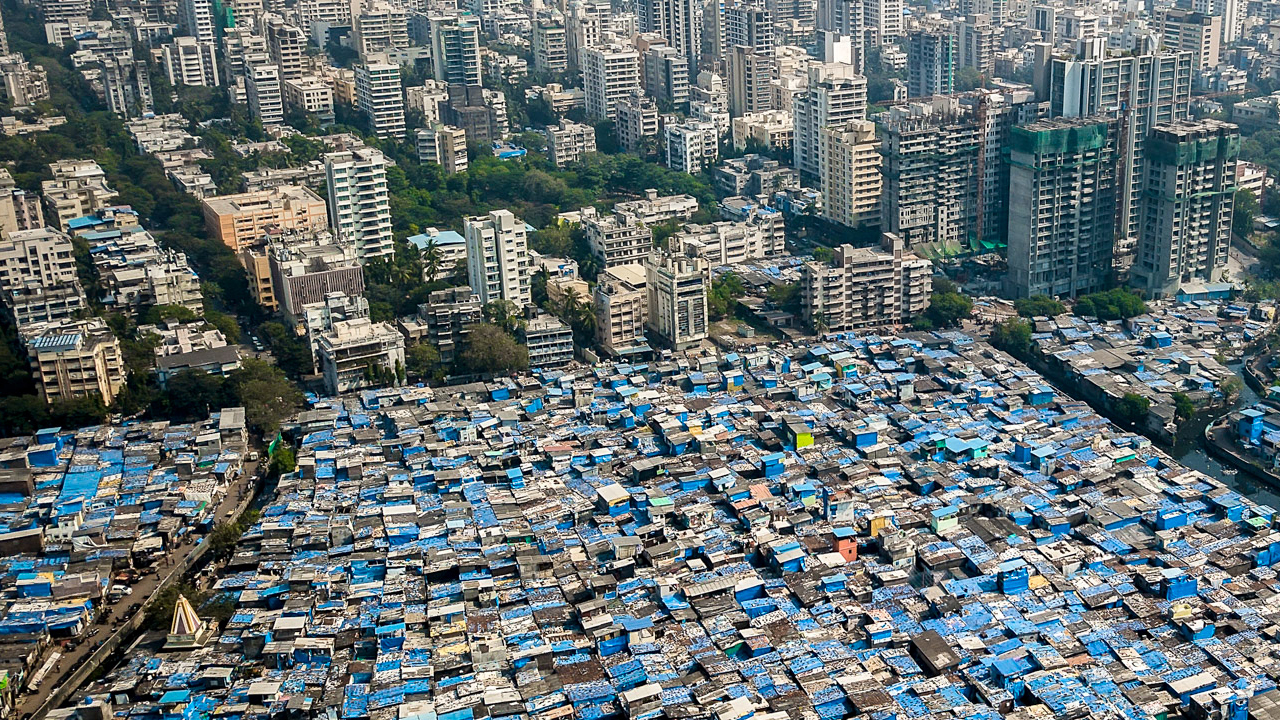The wealth concentrated in the richest 1% of India’s population is at its highest in six decades since 1961, and their percentage share of income exceeds that of countries including Brazil and the United States, a research group the World Inequality Lab said in a report based on a study.
Groundxero | March 20, 2024
The gap between India’s rich and poor is startling. The most recent exhibition of this extreme inequality, bordering on vulgarity, was on display during the $120 million pre-wedding celebrations for India’s richest business tycoon Mukesh Ambani’s son. The lad of the richest Indian wore a $1 million watch, a superstar flown in from the US to perform and entertain guests received $6 million, and the Indian defence and aviation authority temporarily allowed a nearby airport to fly in international celebrities.
Another news report has revealed that Ekagrah Rohan the four-month-old grandson of Narayana Murthy, the founder and promoter of Infosys, probably become the youngest Indian millionaire when his grandfather gifted 15,00,000 shares, equivalent to a 0.04 percent stake in Infosys, worth over Rs 240 crore, to him. A few months back, the same Indian billionaire Narayana Murthy has advised young people in India to work 70 hours a week to boost the country’s economy, saying the country’s educated population owes it to the less fortunate to work “extremely hard”. Surely, the youths of India need to work 12 hours a day and create surplus so that the less fortunate ones like his grandson can inherit wealth in millions in a country where a report on prevalence of “Zero Food” children in India estimated 6.7 million or one out of five children aged between 6 months and 2 years in the country have to go without any supplementary food apart from mother’s breast milk for a stretch of 24 hours.
This startling inequality accelerating at a rapid pace along with economic growth was revealed in a study, titled “ECONOMIC INEQUALITY IN INDIA: THE “BILLIONAIRE RAJ” and authored by economists Nitin Kumar Bharti, Lucas Chancel, Thomas Piketty and Anmol Somanchi. According to the study, the top 1% of India’s population held 22.6% of the country’s income and 40.1% of wealth in 2022-’23.
The study said that the 1991 liberalisation reforms and the opening of the economy to global markets seem to have made inequality a more salient issue as the number of Indians with net worth exceeding $1 billion (approximately Rs 100 crores) increased from 1 in 1991 to 162 in 2022. Further, the rise of top-end inequality in India has been particularly pronounced in terms of wealth concentration between 2014-’15 and 2022-’23. The study points out that the PM Narendra Modi’s tenure from 2014 onwards has been characterised by a widening gap between rich and the rural poor amid high economic growth.
By the end of 2023, India’s richest citizens owned 40.1% of the country’s wealth, the highest since 1961, and their share of total income was 22.6%, the most since 1922. The 10,000 wealthiest individuals of the 92 million Indian adults own an average of Rs 22.6 billion ($271.91 million) in wealth, 16,763 times the country’s average, while the top 1% possess an average of 54 million in wealth. “The ‘Billionaire Raj’ headed by India’s modern bourgeoisie is now more unequal than the British Raj headed by the colonialist forces,” the authors of the study said.
The authors said that the poor in India are paying disproportionately higher taxes, and spending more on essential items and services when compared to the rich. They also added that public investments in health, education and nutrition were needed to “enable the average Indian, and not just the elites,” to benefit from globalisation. “A ‘super tax’ of 2% on the net wealth of the 167 wealthiest families in 2022-’23 would yield 0.5% of national income in revenues and create valuable fiscal space to facilitate such investments,” the study said. It added that factors, including a lack of education have trapped some people in low-paid jobs and depressed the growth of the bottom 50% and middle 40% of Indians.
The Key findings are of the study paper are summarised below :
- Inequality declined post-independence till the early 1980s, after which it began rising and has skyrocketed since the early 2000s. Trends of top income and wealth shares track each other over the entire period of the study.
- Between 2014-15 and 2022-23, the rise of top-end inequality has been particularly pronounced in terms of wealth concentration. By 2022-23, top 1% income and wealth shares (22.6% and 40.1%) are at their highest historical levels and India’s top 1% income share is among the very highest in the world, higher than even South Africa, Brazil and US.
- In line with earlier work, the paper finds suggestive evidence that the Indian income tax system might be regressive when viewed from the lens of net wealth.
The story is the same in the United States where since the last four years ago, when USA entered the Covid-19 pandemic, the Four years later, on March 18, 2024, the country has 737 billionaires with a combined wealth of $5.529 trillion, an 87.6 percent increase of $2.58 trillion, according to Institute for Policy Studies calculations of Forbes Real Time Billionaire Data.
In India, the COVID-19 pandemic delivered a harsh blow, causing millions of Indian workers to revert to low-productivity agricultural jobs. Today, 70 million more Indians work in agriculture than in 2018, owing to the scarcity of non-agricultural job opportunities, which are mostly confined to financially and physically precarious sectors such as construction, street vending, security, and domestic work, further widening the gap between India’s rich and poor. Meanwhile, in the absence of comprehensive and credible consumption and inflation data, it is impossible to get an accurate picture of Indian poverty during the last decade.

